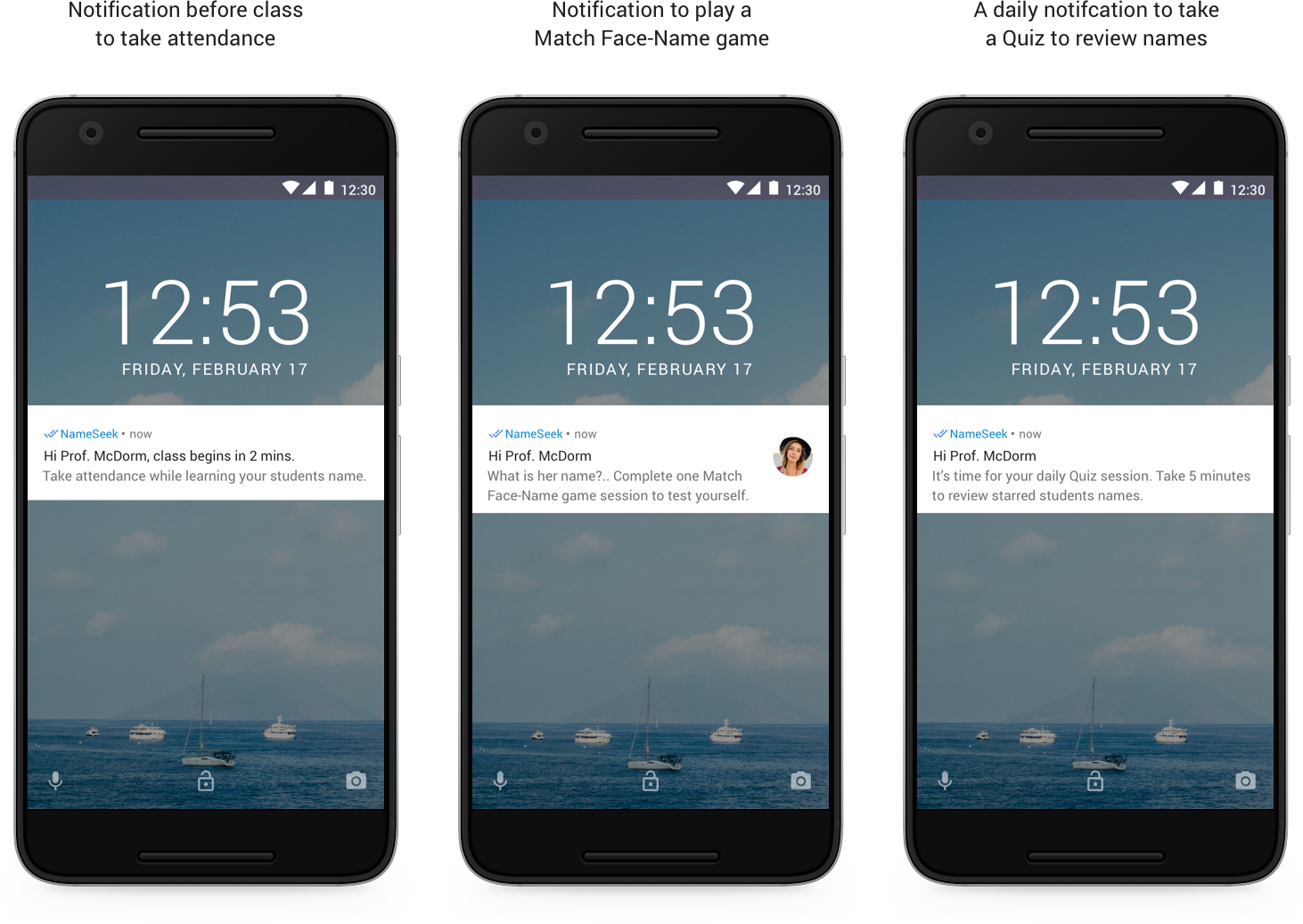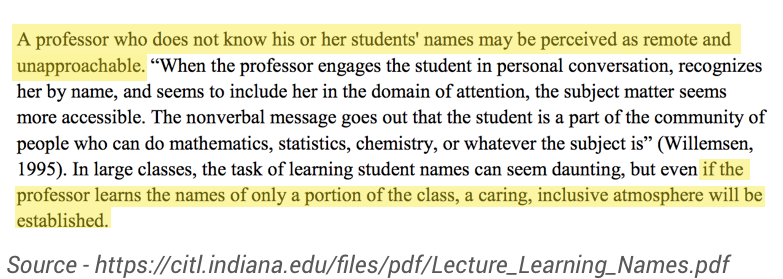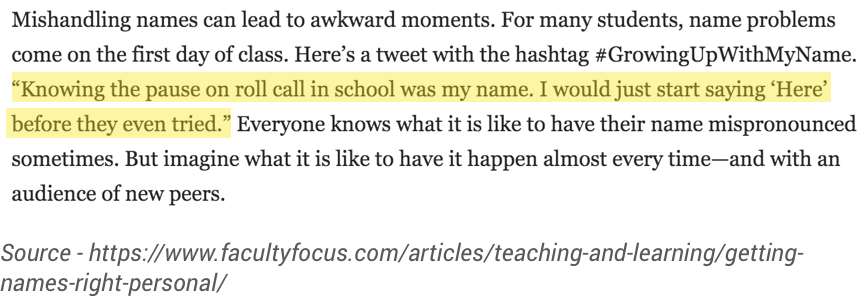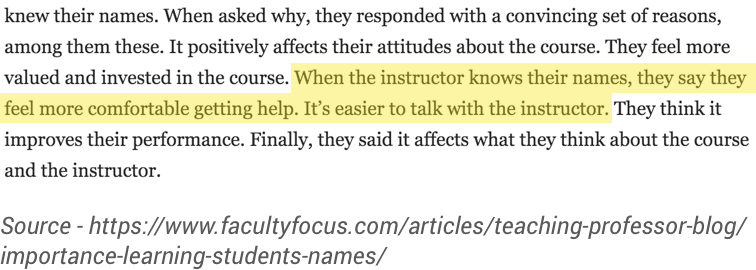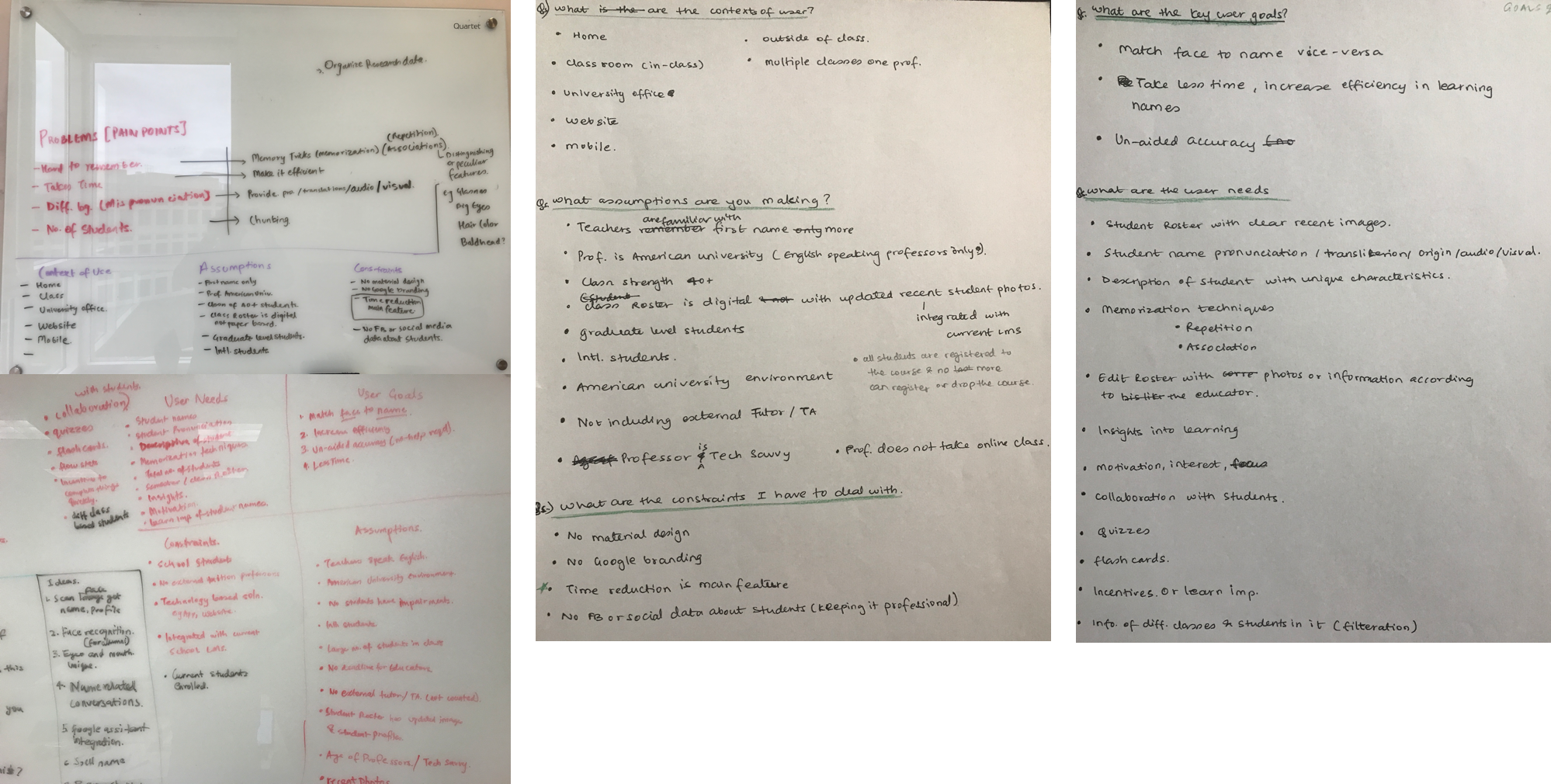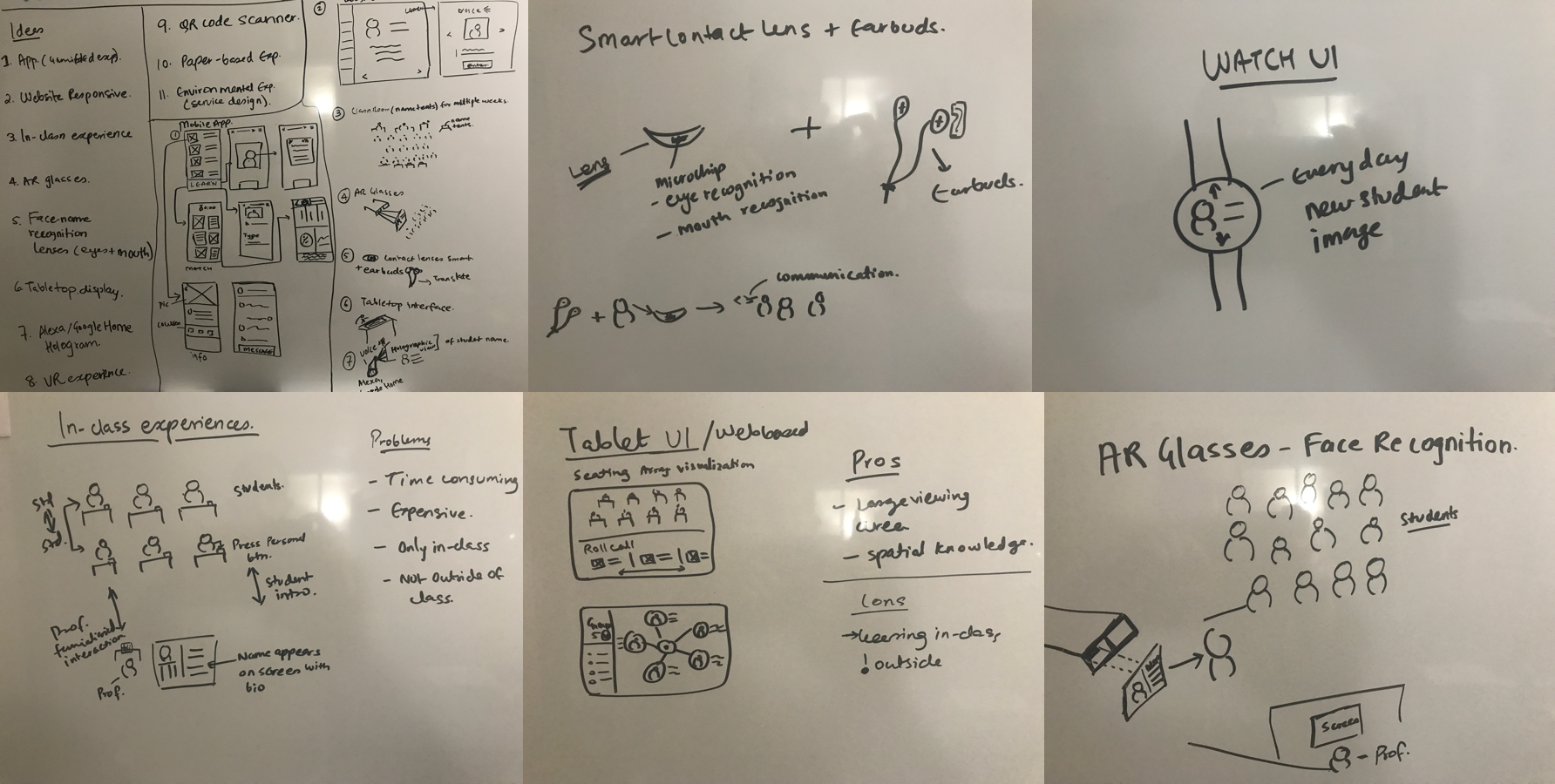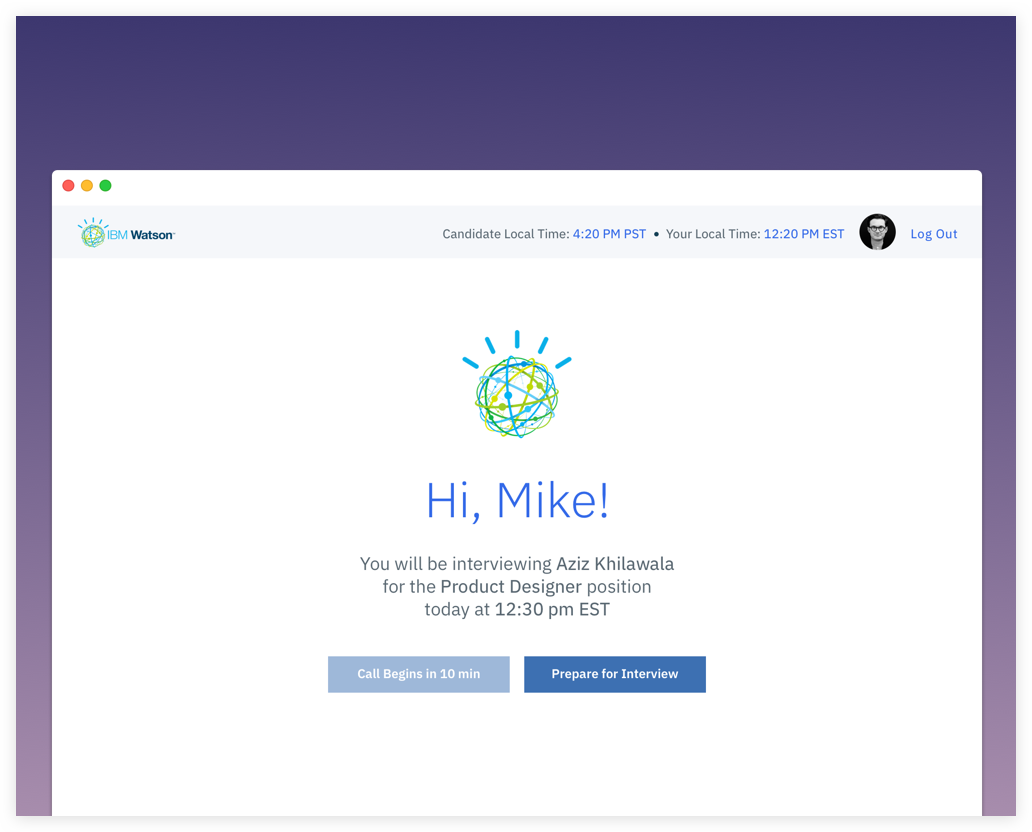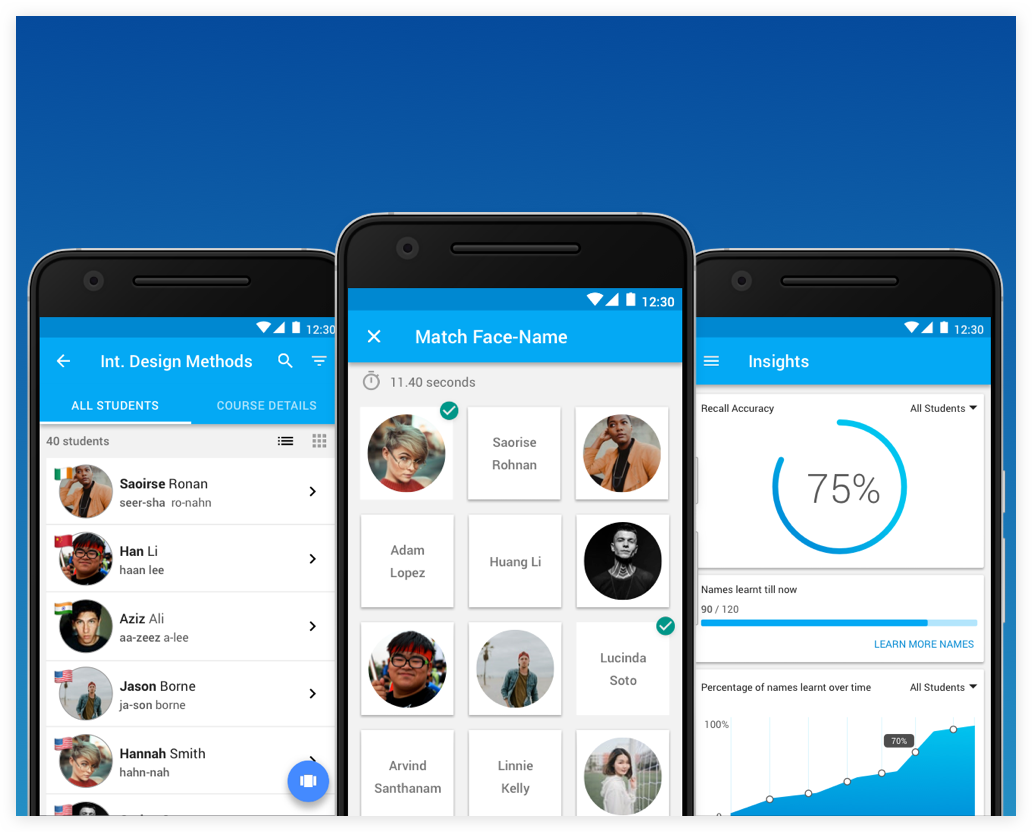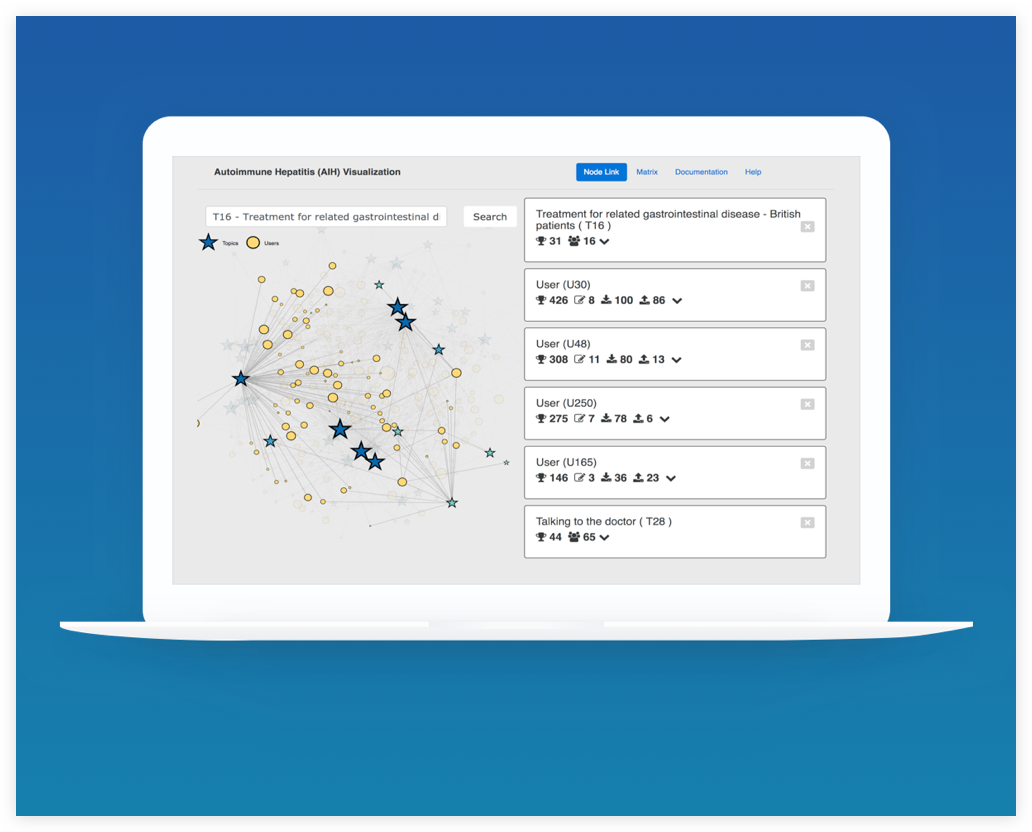NameSeek
A platform to assist educators in seeking new ways to remember names of their students.

The Prompt
At the beginning of each new semester or school year, teachers are faced with the challenge of remembering names for a large number of new students. Design an experience to help an educator match faces to names, with the goal of shortening the time needed to reach complete un-aided accuracy. ONE WEEK DESIGN SPRINTBut first, why should teachers learn all their student’s names?
The sweetest sound in the world is a person’s name – Dale CarnegieA name is an important aspect of a person’s identity. If a teacher learns names and correct pronunciations of their students, it makes them feel accepted especially if they are from a different culture. By doing some research online, I found how students feel when teachers remember their names:-
1. It positively affects students attitudes. Students feel valued and invested
2. It demonstrates personal investment in the student.
3. Feeling of acknowledgment and acceptance if from a different culture
4. It avoids embarrassment for students
5. Improves student – teacher interaction
Okay, so what is the problem?
For teachers, remembering names of a large number of new students is hard and can take one to two semesters to recognize students by their names and faces correctly. This is especially difficult in universities with international students that span different cultures and backgrounds. Also, one teacher may teach two to three classes every semester and it can be overwhelming and at times unrealistic to connect the names and faces of their students accurately.But, what are teachers currently doing about this and what challenges are they facing? The only way to answer this is by talking to them and understanding their story.
Primary Research
Talking to the users and understanding the why behind their problems
I sent emails to my college professors at Indiana University, Indianapolis to schedule interviews with them. I conducted one in-person interview with a professor at my university and four remote interviews by sending questions over email based on the professor’s request. I also conducted interviews with a couple international students to understand if there were any efforts taken by the student to help the professor familiarize with their names.What did the professors say?

“I do not have a problem learning faces but the main problem is connecting the name with the face”
“It is hard to recall names from face unless there is a unique characteristic to associate with.”
“In large class sizes, greater than 20 students, it is difficult to make a personal connection with them.”
“There is some work from the students for sure to help us remember their names.”
“Regular interaction with students help solidify name and face in memory quickly”
“It can take one, two or three semesters to learn names of all students”
What did the students say?

“It takes the professor time to learn how to pronounce my name they have to repeat it twice or thrice before getting it right. Majority of the time I have to politely correct them”
“The main reason is different regional accent and unfamiliarity with different names and their phonetic pronunciation”.
What efforts are professors currently taking to learn names of students?
While some professors rely only on interaction with their students to remember names, some take a genuine interest to learn names of their students both before & during the class.Mapping the professor’s experience with learning names before class
Mapping the professor’s experience with learning names in class.
Secondary Research
Reading the current literature on what teachers do to remember names of students
By understanding the pain points of teachers at my university, I checked a few articles online to learn what teachers are currently doing at other schools and universities to curb this problem. I learned that it largely depends on the personality of the professor to indulge in active interaction with the students to remember their names. However, a few memorization and association techniques suggested are as follows:- 1. Creating name tags by asking students how they would like to be addressed and one sentence that makes them memorable eg. quote, hobby, etc 2. Gaining familiarity with the class roster early on before the beginning of the class 3. Asking students for their preferred names and phonetic pronunciation to avoid mispronunciation 4. Creating a customized roster with name, picture, and phonetic pronunciationInsights
Synthesizing research and identifying the insights
I documented the pain points that the users faced along with the secondary research data to identify the insights that would lead the design direction to proceed with ideation.What insights do we finally have now?
1. It is hard for professors to remember names of all students How might we help teachers ease the pain in remembering names by creating a means to easily match the student name with the right face? 2. It takes a long time to remember names of all the students How might we help the professor by creating an efficient way to accurately remember student names in less time. 3. Unfamiliarity and mispronunciations with student names pose difficulty in learning for professors How might we help teachers pronounce names easily and familiarize them with different backgrounds and cultures of their students 4. Professors would like students to interact and engage with them to help remember their names How might we create a platform to foster communication between students and teachers to aid associating names and faces easilyIdeation
Before brainstorming different solutions, I first jumped on the whiteboard, mapped the pain points and then documented the key user goals, needs, assumptions, constraints and various context of use.The following ideas emerged
1. Mobile App
A dedicated mobile app with digital student rosters and phonetic pronunciation flashcards of students.
There are currently applications in the market that aid in memorizing information using a spaced repetition system (flashcards) and review based quizzes to learn and memorize faster. A mobile app can also be used on the go in-class as well and outside of class, and less costly to develop.
2. AR glasses with face recognition
Augmented reality-based glasses that relay name and by recognizing students name.
There are companies like Rokid that is developing a concept for AR glasses with face recognition. But, the teacher will always have to wear it throughout the class which may be uncomfortable. Also, the concept of the AR glass is difficult to implement and would need a greater development budget.
4. Tablet UI / Website
A dedicated tablet in classrooms with a roll call visualization of seating arrangement of students. Teachers can take attendance through it and learn names of students with phonetic pronunciation. The Tablet UI will also show other visualizations based on student data, like demographics, name meanings, students segregated in certain project teams to help professor remember names using spatial knowledge.
But, a separate tablet for each professor could increase costs for educational institutions as well.
5. Watch UI
A smartwatch app which reminds the teacher to learn one student name daily. Every day a new image of a student will appear and then different names will be reviewed daily.
Here the problem is that only teachers with smartwatches can use it.
Making a decision and moving forward by selecting a feasible idea
For the final solution, I decided to go with the idea of designing a mobile application. Since learning and remembering names is a constant process of repetition and active recall a mobile app can help in this scenario. There are 5 billion mobile users right now in the world and a mobile app can be assumed to be accessible by the majority of the target users. Teachers can use the app in-class or outside at their own convenience and does not require any setup costs.Feature Planning
Before jumping towards sketching the solution, I started thinking of different features that meet the goals and needs of the user. The goals of the design were as follows: 1. It should take the professor less time in learning names of students 2. It should increase the ability of the professor to connect the face with the right name 3. It should help the professor reach complete accuracy without any assistanceFig. The features planned
Sketching & Wireframing the Idea
I did ample of sketching in this design challenge, trying different layouts and features of the mobile app. I found it challenging to come to a correct flow of the application and how the features will be discoverable by the teacher.Introducing NameSeek
NameSeek is a mobile application that will aid the professor in learning names of a large number of new students with different learning techniques like flashcards, an interactive name to face matching game and quizzes to review their accuracy.So, how does NameSeek work?
The teacher opens the NameSeek app on their phone and selects their educational institution. The NameSeek app identifies the Learning Management System used by the Institution and builds up the experience for the teacher. The teacher is greeted on the home screen where s/he can find the ways to learn names of their students. Throughout the app, I am assuming that the teacher is an English language speaking professor at an American University with International Students1. User Onboarding
Introducing NameSeek to the teacher.

From the home screen, the professor finds a welcome greeting informing about the total students enrolled in this semester to their class. The professor decides to view classes and is taken to classes page. Each class information shows the total no. of the students enrolled. The professor then selects a class and finds the list of students with their recent profile photos and names. Each student’s name is represented by its phonetic pronunciation which I would like the students to provide it themselves. This is because it is a shared responsibility of the student as well to help the professor learn their names correctly. If not, NameSeek generates the pronunciation by using a free service called NameShouts. Also, on each student avatar, there is a flag of their nationality which shows the diversity of the class. The professor then views a student’s profile and finds their preferred and legal names with some unique information about them. This helps the professor add mental associations with the name and face of the student. If the professor thinks the name will be hard to remember, he can star the name to review it later.2. View Class Roster
Allowing teachers to discover their diverse students

On the student list, the professor finds a floating action button. As the professor taps the button flashcards emerge. Why Flashcards? According to psychology when a person looks at the front of a flashcard, they engage with a mental faculty called “Active Recall”. Active recall creates stronger neuron connections to help us trace our memory. And because flashcards can easily facilitate repetition, they are the best way for the professor to recall student names. The flashcards are presented in a stacked view as that is how cards are stacked in reality. The flashcards will have a swipe left or right interaction. The front view of the flashcard shows the image of a student and the back view flips over to show the name with its correct phonetic pronunciation. The teacher can star any hard to remember name, and can add a note to help them recall the student’s name. Also, the first name is kept bold, as during my primary research I found that teachers are familiar with first names than last names especially in the case of international students.3. Introducing Flashcards
Helping the teacher learn their student names and gain familiarity
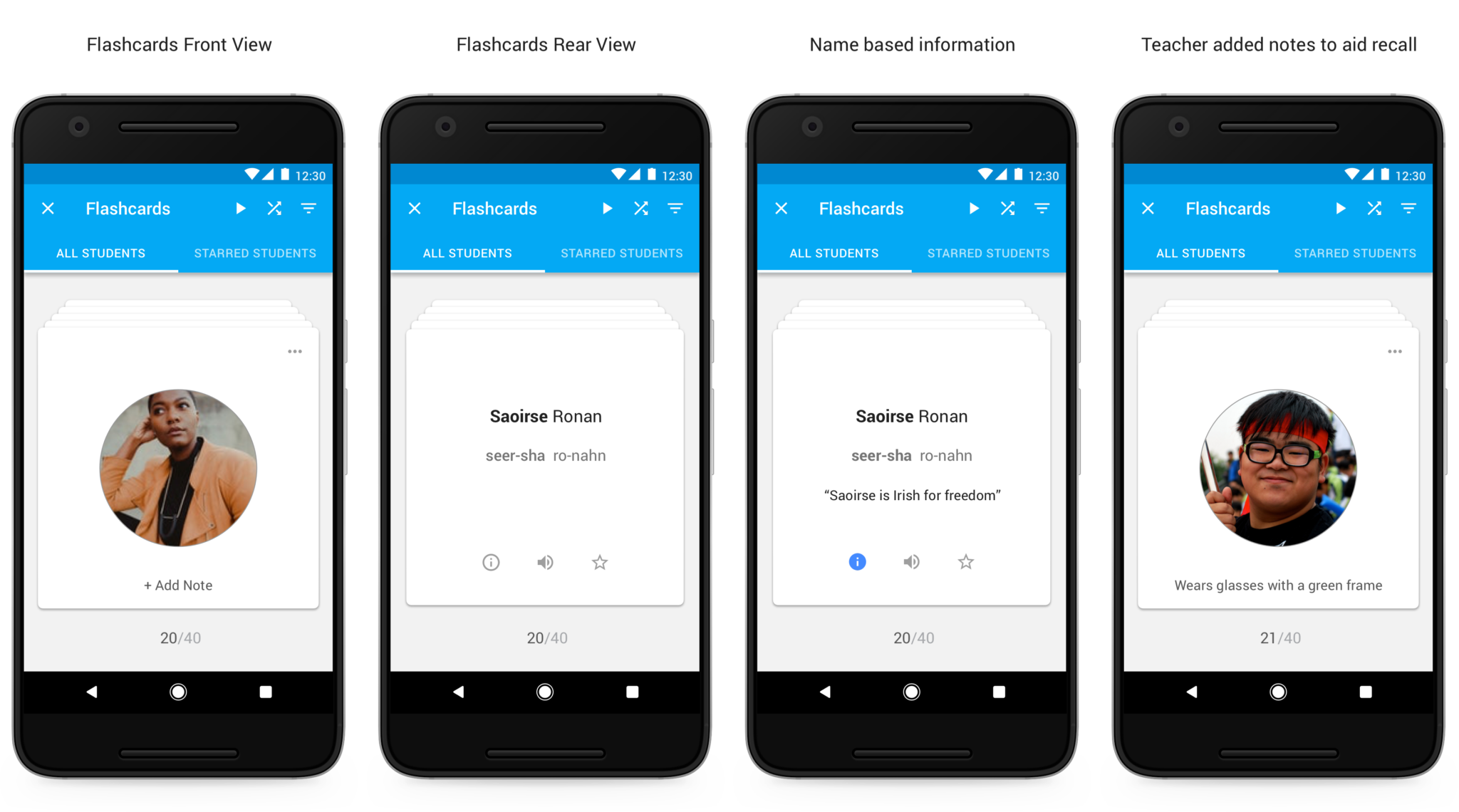
Why Match Face-Name? From all the professors I spoke with the majority of them were good at remembering faces, but found it difficult to connect the face with the right name. A matching game would help the teacher in this context by testing their ability to make the right connections. The Match Face-Name game is discoverable from the hamburger menu. The teacher will be notified about playing the game after they have flipped through all the flashcards in the student set. The game will have a stopwatch running the moment it starts. The teacher has to match the face with the name or vice-versa.4. Match Face-Name
Engaging teachers with an interactive game to help them accurately connect the students face with the name or vice-versa
In the current scenario, the teacher selects to play the game to test with starred students. The teacher then selects the right name and face and receives a success message. When an incorrect combination is selected the timer increases by a second. Upon completing the game, the teacher will come to know the time they took to complete the challenge and any improvements made than previously.
*The game will not be considered complete unless the teacher is able to select the right combination of all the options. This game may make teachers increase their attention and focus to recall the name from the face, thereby increasing speed and accuracy
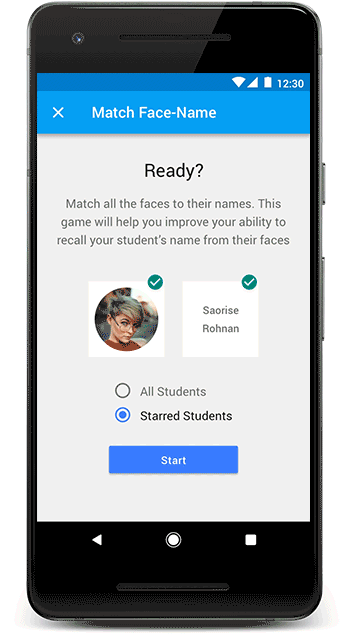
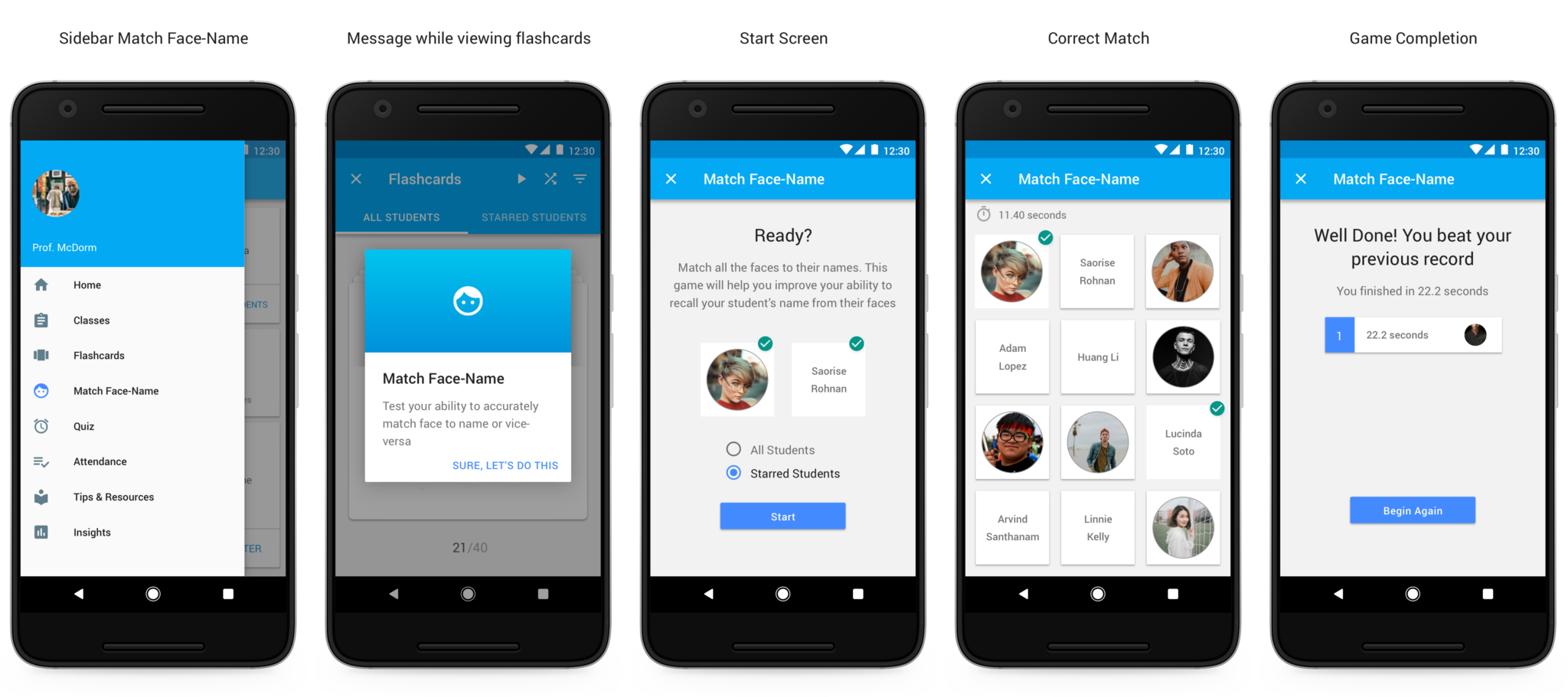
Why Quiz? A quiz is a way for the teacher to review their memory and test how well can they recall the name of the student. A quiz will help the teacher to acknowledge and validate their progress. Also, the more quizzes teachers will take the better they will get in coming up with ways to remember names.5. Quiz
Helping teachers to review their learnings and test their ability to recall students name.
In NameSeek, a quiz is made up of multiple question types. Teachers can test how well they can spell or pronounce the name. Teachers will also be able to select the right face from three name choices and vice-versa.
If the teacher gets a correct answer, a success message appears and the next question comes up. If they get a wrong answer, they will be presented with the correct answer and then the next question follows. Currently, I have not designed the incorrect answer flow, but that will be the next step.
Upon Quiz completion, the teacher will get an accuracy score to quantify their progress. If interested, they can review their incorrect responses.
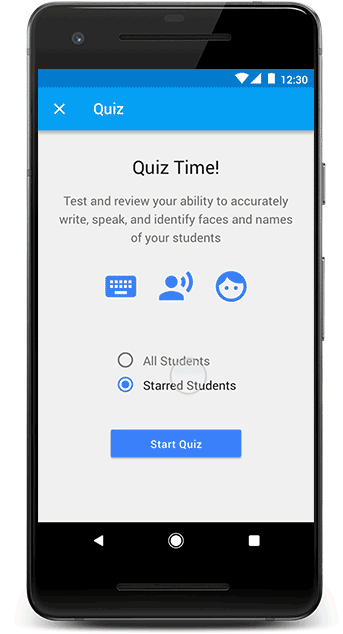
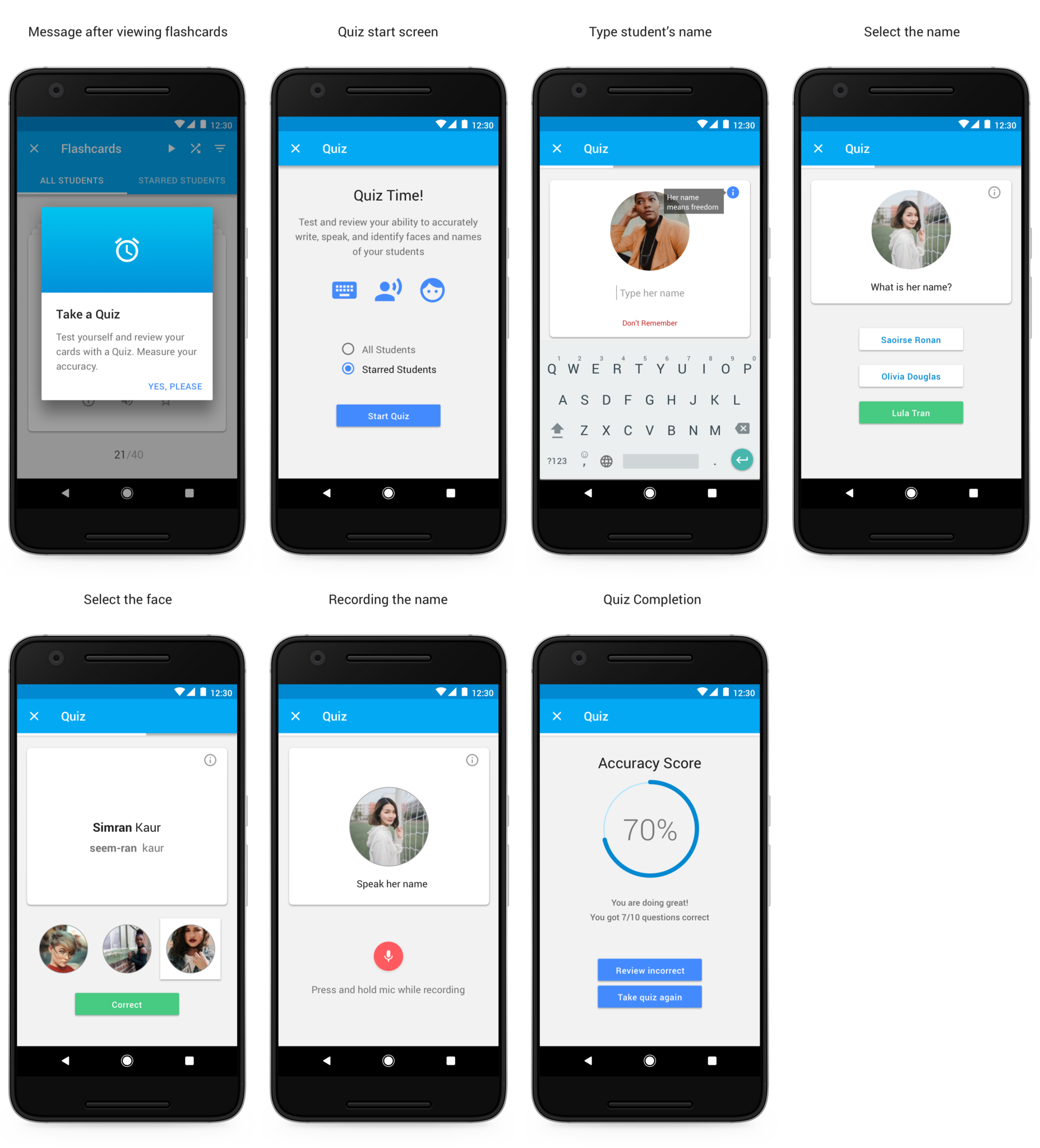
Why Insights? During research, professors mentioned that it takes them at least one semester to learn the names of their students properly. Insights can help visually track the time they have spent and reflect on their progress. It could work as a means to motivate the user to make further progress and shorten the time it takes to remember students name.6. Insights
Teachers can track the progress they have made with remembering names.

Why Attendance? As found in research, teachers use paper-based attendance sheet with images of student and their names to call out the students and listen to their names carefully. NameSeek curbs this problem by providing a means to take attendance of students which syncs with the Learning Management System. The teacher can star students whose name are difficult to pronounce and would require more practice to remember it properly.7. Take Attendance
NameSeek can also be used in-class for taking attendance of students.
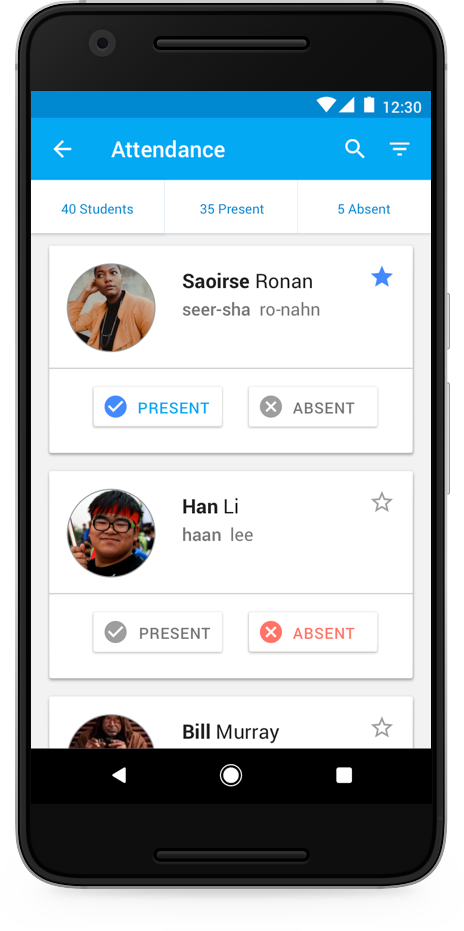
Why Notifications? According to the Psychology of Notifications, good triggers are those that are carefully timed. Teachers are usually busy and don’t have a lot of time to dedicate to learning names. Therefore these notifications have to be pushed at times when the teacher is most likely to act on it. Having a notification to take attendance before the beginning of the class works well in the context of use. Other notifications for the matching game and quiz are also implemented.8. Notifications
Pushing notifications to remind teachers to remember names according to their schedule and convenience
